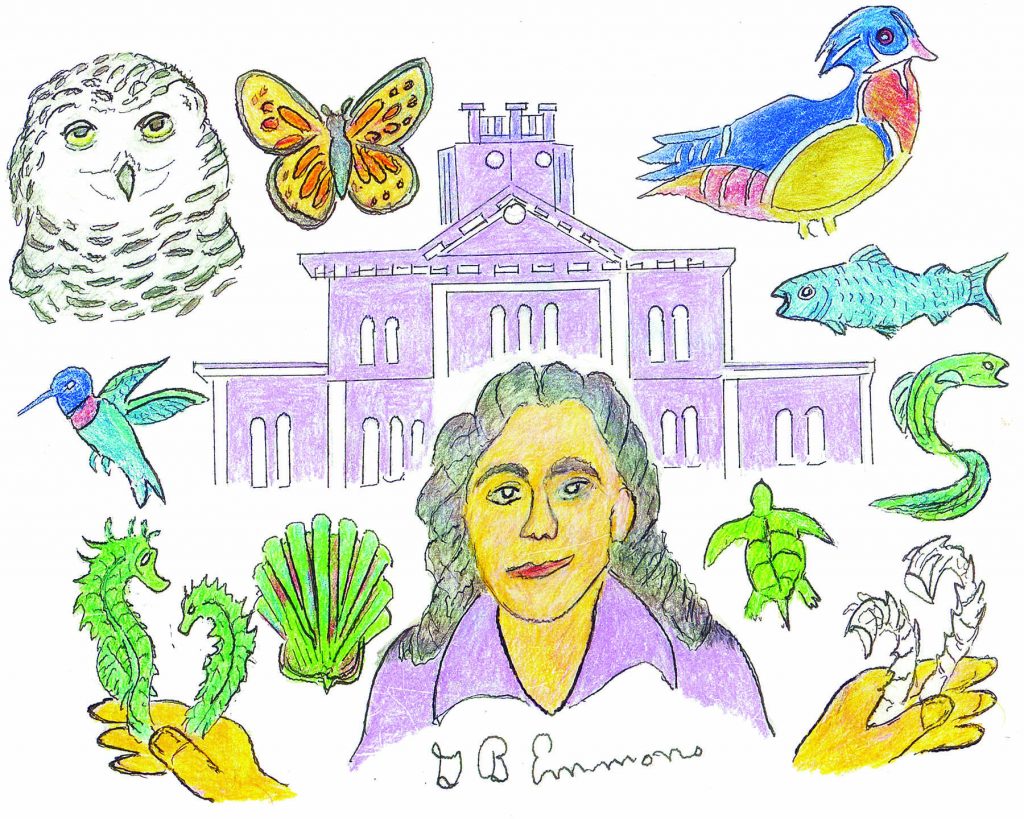Marion’s landmark library building of Elizabethan architecture is also the Natural History Museum, both founded there on 8 Spring Street by Elizabeth Taber in the year 1867. For the past 152 years, they have served as Tabor’s upstairs-downstairs community flagship of higher education.
In 1989, Elizabeth Leidhold, as seen in my illustration, became the current director of the museum. She was just married and came well qualified with a B. S. degree in Forestry and Wildlife from the University of Connecticut, with additional class work in soil science and education. For the next 30 years, under the auspices of the Marion Natural History Society, with the broad scope of her educated tutelage, she dedicated her efforts to provide education of local plants, animals, minerals, and marine biology.
The facilities of Elizabeth Taber’s endowment are a stellar state of the art collection under glass cases of displays of seashells, fossils, butterflies, insects, bird nests, and bird eggs. The quality and diversity of her endowment reminds me of the renowned collection of glass flowers in Harvard Museum of Natural History in Cambridge, Massachusetts.
More recent high-tech facilities have also graduated to include visitors’ ability to step into room scale settings, such as the virtual reality experience of standing under water to see a blue whale up close, or on the surface of Mars next to the Curiosity rover.
Children’s programs also augment the Massachusetts science standards curriculum, such as animal habitat adaption, geology, and weather. For school grades 3 to 6, summer programs explore our coastline, plus two-hour lecture visits from fish and wildlife scientists and entomologists.
Many beneficial school programs for adults are often funded in association by the local Marion Cultural Council. Children’s courses may include demonstrations of artistic illustration for youngsters to draw from nature. Adult lecture programs include a broad scope about stone walls of New England, right whales, birds of prey, reptiles, vernal pools, astronomy, backyard bird counts, alewives, and winter tree walks.
The Museum always welcomes new members and volunteers or docents to join in with those from Tabor Academy and Old Rochester Regional High School. There is also a natural history book club that meets once a month.
Upon occasion, the director responds to invitations, being asked to give visiting lectures to share Marion’s natural history and heritage to audiences of other Southcoast institutions of education and learning. You, the reader, can easily join to be part of Marion’s museum of new members as it reaches out like the beaming beacon of a lighthouse for those seeking enlightenment of our Buzzards Bay ecology.
By George B. Emmons
